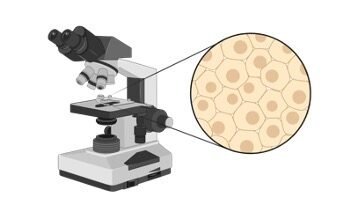Significance of Mitosis: Introduction
Growth and development are essential in to an organism to survive in dynamic environment.
Development and growth are inevitable changes which requires and needs a specific mechanism to grow in an adverse condition and ensure a healthy progeny to do the same.
Cell division in general is the process where an organism grows and develops in the ever-changing environment.
To ensure the line of a species they reproduce in which half of parent’s genetic material is transferred to the young one by the process of reduced division of cell; plays a primary and minimal role in developing a progeny.
In an organism’s life the cell division plays a major role in development; determining the structure, function and capacity according to the genetic expression.
The patterning and molding are mediated by exponential cell division known as the mitosis.
Changes in cell division which is not inherited to the progeny but affects the regular functions are observed in Somatic cells – divides through mitosis.
Mechanism of Mitosis
Mitosis is one of the phases in a cell cycle; is a process which produces two identical daughter cells from a single parent cell; induced when proper nutrient requirement and hormonal internal cues are synchronized.
Mitosis is preceded by 2 Gap phases and single Synthesis phase where diploid cells replicate and becomes tetraploid chromosomes with 4 arms and a centromere – highly condensed region during initial mitosis stage – Late prophase and Metaphase.
The commitment to enter the cell cycle is given by the expression of protein dependent kinases – dimers in cell cycle control; Cyclin and Cyclin Dependent Kinases.
Preparatory interphase makes a cell capable of self-division and replication of cellular function from the preexisting cells.
Mitosis itself proceeds through different phases of prophase, metaphase, anaphase and telophase; arranging and segregation the chromosomes and other cell materials and organelles (precursors) from the existing cells.
Pre-Mitotic Phase
The regulatory proteins make essential measures and fulfills cell’s need to enter mitosis in a steady state.
At each stage the cells gain an important feature to undergo cell division and divide genetic and other cell component evenly to each daughter cell.
During Interphase; it is the non – dividing phase of a cell where the cells undergo synthesis of RNA, Proteins and genetic material to proceed the cycle; are frequently regulated by protein kinases phosphorylating inhibitors to repress few genes and enhance the gene expression of few others to synthesis DNA.
Checkpoints at each phase makes the cell cycle error free and maintains the integrity of the cycle.
The G1 phase has a checkpoint which when crossed; the cells get committed to mitosis irreversibly is governed by the CDK – CYC complexes in eukaryotes.
The G1 checkpoint makes sure the cell undergoing mitosis has essential nutrients to proceed throughout the cell cycle.
The synthesis phase is initiated when the CDKA – CYC D of G1 produces transcriptional factors (ORC – Origin Replication Complex) which sits on the replication origin region of the chromatin fibers and initiate DNA Replication in S Phase.
When the cell completes the S Phase, they are auto regulated by same Transcriptional factors induced G1 phase protein kinases which limits replication when the cells have an ideal DNA for mitosis.
The cells enter G2 Phase. CDKA – CYCA expression increases in G2 Phase produces transcriptional factors which completes gene expression for other cellular mitotic requirements and when the expression reaches a particular threshold activates other G2 transcriptional factors which repress the gene expression and promotes.
Condensation of the chromatin fibers and prepare the cell to enter mitosis.
Mitotic Phase
Mitosis is regulated by CYCB – CDKB from late G2 phase and are then dominated by CYCD – CDKA where each phase has their significant feature starting from prophase; the chromatin condenses to chromosome but not completely; includes the disintegration of many cell organelles and nuclear membrane and in cytoplasm many microtubules are formed.
In Plants a specialized pre – prophase band starts to form.
Metaphase marks the complete elimination of nuclear membrane and condensed chromosomes are formed.
Later the preprophase band in plants attach to the kinetochores and make the chromosome to arrange at metaphase equatorial plate after all chromosomes are arranged by the spindle fibers of opposite poles the cell enters Anaphase.
The sister chromatids re separated by breaking Cohesins binding the chromosomes by proteolysis and drags the sister chromatids to opposite poles.
In Telophase; the daughter chromatids on opposite ends starts decondensation; reappearance of Golgi complex mitochondria chloroplast and other cell organelles are formed.
The cell cycle when complete develops the cell wall and remains adjacent to each other; when induced enters the cell cycle again or remains same in the G1 phase or enter G0 phase for maturation till they are eliminated.
Significance of Mitosis
o Mitosis is the primary mechanism for an organism to grow and helps in development.
o After birth the child develops both quantitatively and qualitatively.
o Mitosis produces new cells from existing cells and increases exponentially to increase the whole growth of the organism.
o Division is from preexisting cells. Every cell in our body is a result of a division of a single cell.
o Cells which enter the cell cycle take up essential nutrients and when an organism undergoes a development or to replace older ones; an induction signal and certain modifying factors makes the cell enter the cell cycle from G0 Phase to produce new cells; is the first type.
o The other type includes ever dividing meristematic cells in plants for growth and cells of intestine and skin of animals where the dead cells must frequently be removed to protect the internal organs from direct exposure to acid and sun.
o Mitosis takes place at appropriate time and appropriate internal cues.
o All cells are not capable of cell division and enter into a G0 Phase where they remain the same all their period of life.
o A nerve cell cannot regenerate or repair any damage caused to it even with stimulus and nutrients; unlike enterocytes, skin cells in animals and meristematic cells in plants which on appropriate nutrition provide continuous growth for the plant.
o In the absence of the appropriate conditions the plant parts under the condition become dormant or temporarily stopped for a particular time and develop when appropriate conditions rise.
o Protects the body from errors of DNA Replication.
o The checkpoints of cell division at each stage of cell cycle from G1 Phase checks primary availability of all essential components such as nutrients, DNA defects, cell size and hormonal influence before the entry of cell into cell cycle.
o G2 phase ensures the health of DNA and DNA replication in Synthesis phase when such defects are noticed, cell cycle halts and repair mechanisms for damaged DNA or extend time for complete DNA Replication.
o Replenish the tissue cell pool and organization.
o In animals’ specific tissues exposed for heavy work are subjected to wear and tear; makes the cell lose its ability to continue the role and efficiency is reduced.
o For Example: Red Blood Cells carrying Oxygen to the tissues, Enterocyte’s exposure to acidic bolus, Stem cells, Skin cell’s exposure to external mechanical stressors such as sun light, pressure etc., requires set of cells to be exposed to and these regions are given the genetic activation of continuous cell division to maintain the tissue pool and sufficient function.
o Provides structural integrity and stability to an organism.
o Cells make up the whole organismal existence which must develop over a period of time to maintain its structure and shape for proper function and survival of the organism.
o A proper cell function is essential to maintain a Homeostasis.
o A small malfunction in a cell caused by external source factors might disrupt the homeostasis causing deviation from the ideal cell.
o These deviations are identified and rectified by the checkpoints of the cell cycle.
o Mitosis is conserved over evolution in eukaryotes.
o The mechanism of how a cell divide is the same in all eukaryotes.
o The main difference will be the signals, nutrients and the proteins involved in regulation of cell cycle.
o Ratio between the cytoplasm and nucleoplasm are maintained.
o The cytoplasm and nucleoplasm are derived from similar components and have the same function of storing components for cell functioning.
o The quantity and few other features such as viscosity differs in cells are maintained during the mitosis at the end of cycle.
o The ratios must be maintained constantly where the deviations will make the cell dysfunctional.
Defects of Mitosis
o Cell division in somatic cells is not inherited by progeny but can be fatal when the regulatory functions does not work properly.
o Most of the time when a cell encounters a somatic DNA errors the body has developed many mechanisms to eliminate the divergent to maintain the homeostasis of a system.
o But the errors when not detected might lead to tumor and cancer which is fatal.
o Reasons for errors in cell division is not clearly known; it might be a result of mutation caused by exposure to carcinogenic gasses, X – rays or other chemical substances.
o Defects of mitosis in plants leads to aneuploidy and does not have fatal effects as in animals and humans.
Few defects in Mitosis are:
1. SAC (Spindle Assembly Checkpoint) defects
2. Cohesins defect
3. Merotelic Attachments
4. K – MT Stability
5. Centrosome amplification
6. Tetra ploidy
Most of the defects are common and are predominantly found in animals.
Impacts in plants are usually less and mostly results in aneuploidy; which is not inherited to the off springs and not fatal.
Significance of Mitosis Citations
- Mitosis in filamentous fungi: how we got where we are. Fungal Genet Biol . 1999 Jun;27(1):1-25.
- Abnormal mitosis in reactive astrocytes. Acta Neuropathol Commun . 2020 Apr 15;8(1):47.
- Mitosis in vertebrates: the G2/M and M/A transitions and their associated checkpoints. Chromosome Res . 2011 Apr;19(3):291-306.
Share




















